Fruits are a healthy and delicious snack to enjoy anytime! Delicious Asian Fruits offer many different varieties of fruits for you to try and their nutritional benefits. Fruits from Vietnam can help with weight loss, provide antioxidants, and more!
The varieties of fruits in Vietnam are just amazing! From dragon fruit to rambutan, there is a wide range available. Not only do these delicious treats have many health benefits but they also taste really good too so you’ll be glad to try them during your next Visit to Vietnam.
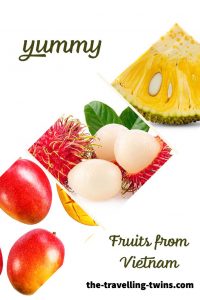
Dragon Fruit
Dragon fruit, also known as pitaya, is a popular fruit from Vietnam that is rich in antioxidants and vitamin C and B.
The fruit inside is usually red or pink with small black seeds. The outside of the fruit is green and has spiny scales.
This fruit is often used in smoothies, yogurt bowls, and more!
Dragon fruit has many health benefits. It can help boost your immune system, fight free radicals, and improve your skin health! Dragon fruit is also a good source of fiber, which can help with weight loss and digestion.
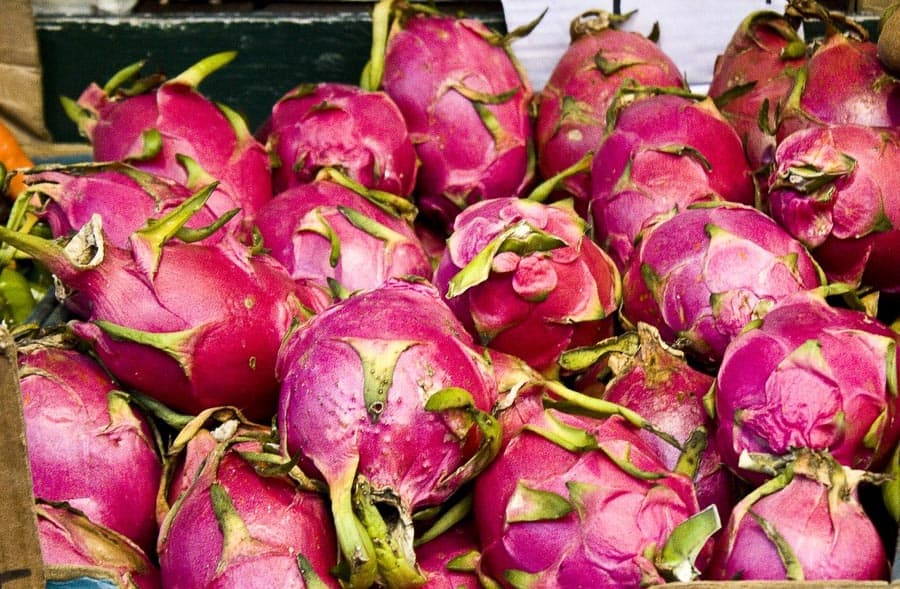
How to eat dragon Fruits?
Cut the Dragon fruit lengthwise in half and slice it inside into cubes or just scoop out the fruit with a spoon.
Rambutan
You can eat dragon fruit by itself or add it to smoothies, yoghurt bowls, and more!
Rambutan is a sweet, hairy fruit that is native to Southeast Asia. This popular tropical fruit is usually red or yellow when ripe, and the inside is white or pink.
This fruit is a good source of vitamin C, potassium, and magnesium.
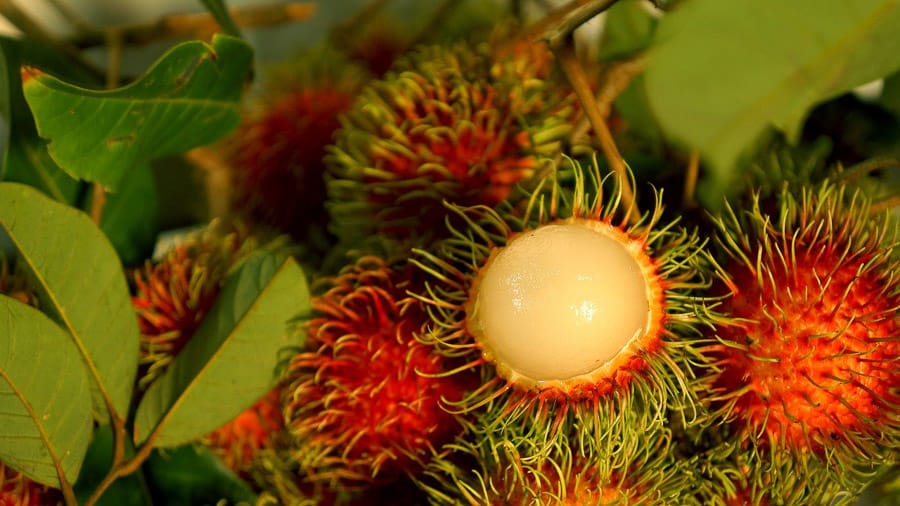
Rambutan can help improve your cardiovascular health, protect your eyesight, and boost your immune system! Rambutan is also known for its anti-inflammatory properties.
How to eat rambutan?
Select a ripe rambutan. Cut a slit in the skin and peel it or squeeze and pop the fruit.
Mangosteen
The mangosteen is a tropical fruit that is native to Southeast Asia. This fruit is prized for its sweet, tangy flavor and the fact that it is one of the most antioxidant-rich fruits in the world!
Mangosteen fruit is sweet and tangy with a juicy texture. It has fluid-filled vesicles like the flesh of citrus fruits.
The seeds are similar in size and shape to almonds.
The mangosteen nutrition is small, but they are one of the most delicious tropical fruits.
Mangosteen can help improve your cardiovascular health, fight free radicals, and boost your immune system! Mangosteen is also known for its anti-inflammatory properties.
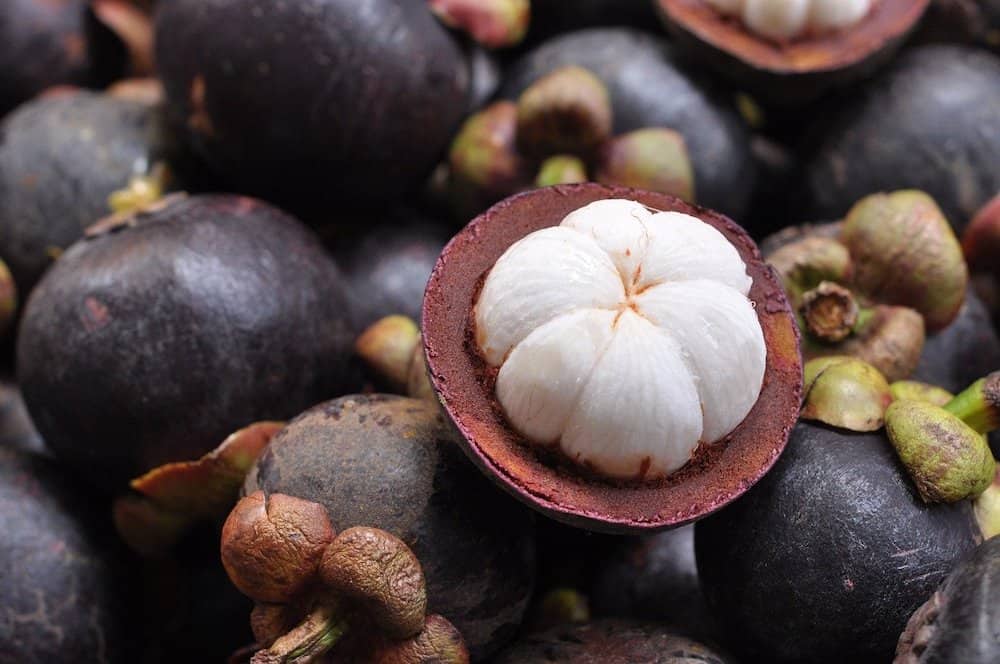
Mangosteen was one of my favourite fruits in Vietnam.
How to Eat Mangosteen?
There are many ways to enjoy mangosteen! One way is to simply cut the fruit in half and eat it like a grape. You can also add mangosteen to smoothies, yogurt or use it as a topping on your favorite desserts!
Mango
Mangoes are a type of fruit that is native to Southeast Asia.
They are one of the most popular exotic fruits in the world and come in two varieties—yellow mango with yellow sweet and soft meat (flesh) and green mangoes ones which are sour.
Mangoes are a good source of vitamins A and C and minerals such as potassium and magnesium.
Mangoes can help improve your cardiovascular health, eyesight, and skin health! Mangoes are also known for their anti-inflammatory properties.
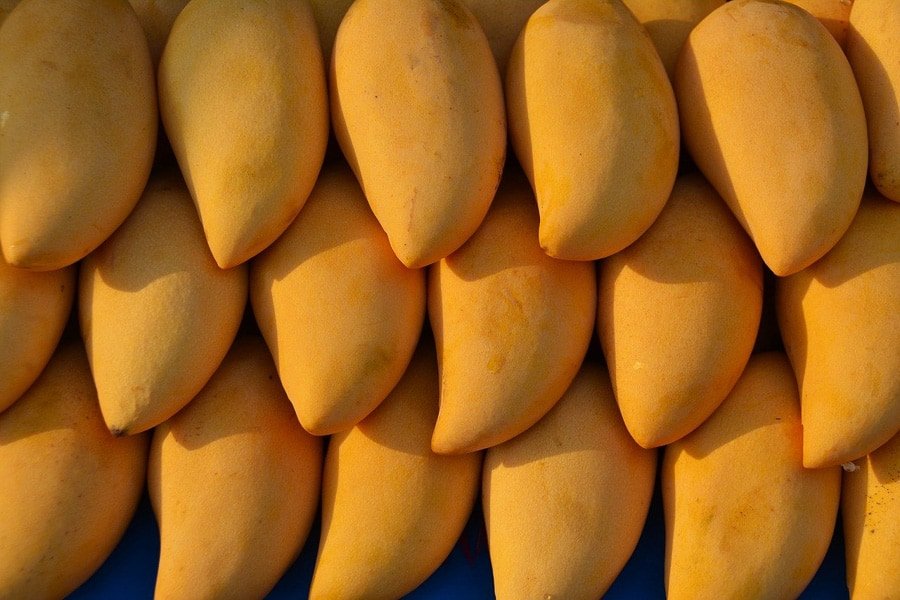
How to eat mango?
Mangoes can be eaten fresh, out-of-hand. Because when ripe mango is a very juicy fruit, the best way is to cut mango along the stone. Score the flesh inside the mango slices without cutting through the skin. Now simply push the skin from inside – “making a mango hedgehog” out and enjoy the cubes of sweet mango.
You can use ripe mango to make fresh yummy Smoothie or add them to yogurt bowls, or use it as a topping on your favorite desserts! One of the best Asian desserts is mango sticky rice.
Green mango is eaten in a savoury green mango salad, often with a sprinkle of salt and chili salt powder or drizzled with lime juice. In Southeast Asia, unripe mango is sometimes used in salads, curries, or as a dipping sauce. Green mango can also be cooked as a pickle.
Custard Apple (Sweetsop)
The custard apple has many different variants, but they all have one thing in common – a sweet taste reminiscent of traditional Custard. Ripe versions are brown or yellowish with red highlights and can be found typically heart-shaped, spherical oblongs irregularly shaped fruits at any time during their ripening process, which starts from green to red depending on cultivar preference
Custard Apple has bumpy green skin covers
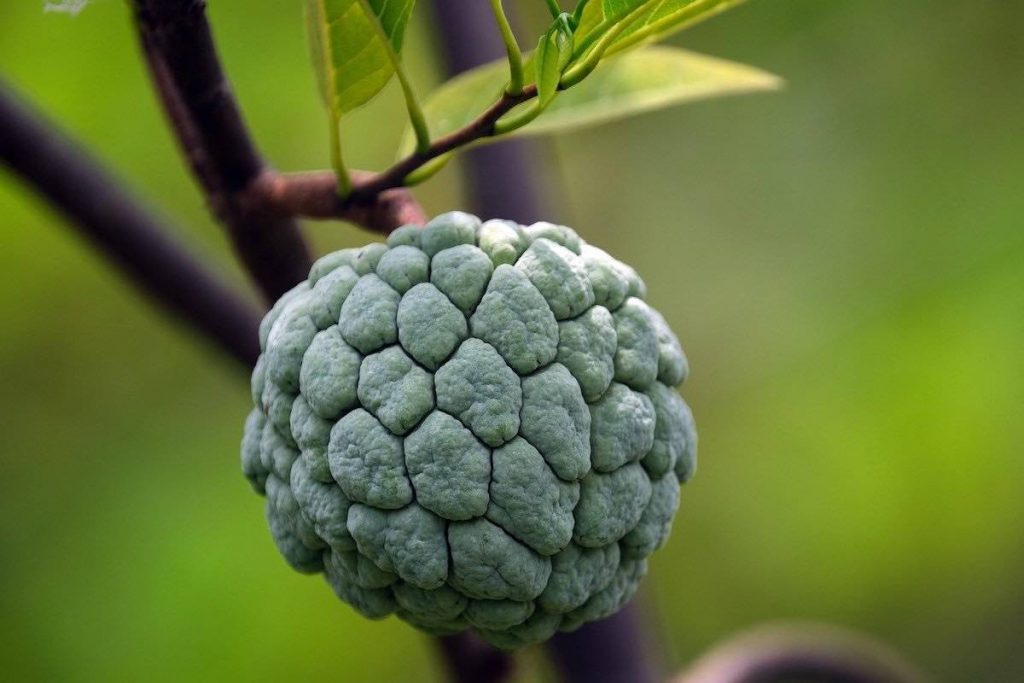
How to eat custard apple?
Custard apples can be eaten fresh; The custard apple have is one of the unique fruits I’ve ever eaten. It has an outer skin that you can easily peel off or cut into half, and then there’s white flesh which tastes delicious with a spoon. But beware– these also contain black stones, which you shouldn’t eat.
Star Fruit – Carambola
Star fruit is a tropical fruit that is native to Southeast Asia.
It has a unique star-shaped appearance and a sweet and sour taste. The carambola, with its tangy taste and sharp acidity, is a perfect fruit for adventurous eaters.
The sour flavour makes it refreshing in the mouth while still being sweet enough that you won’t feel like your teeth are on fire after eating one!
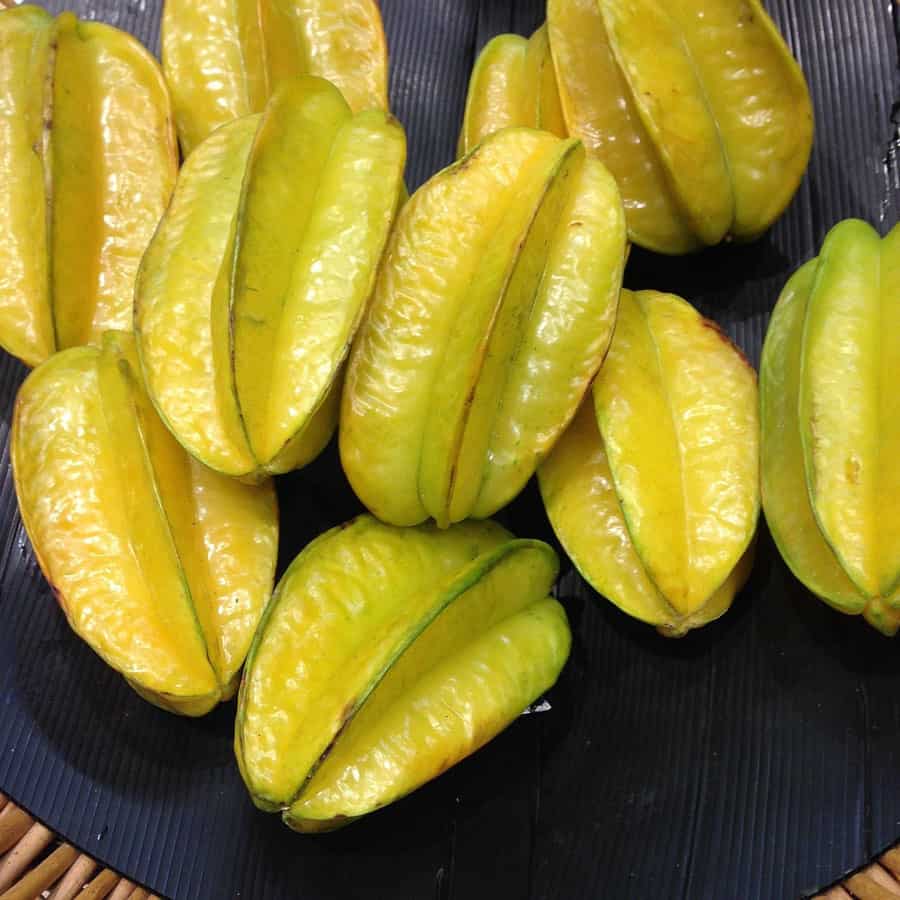
How to eat star Fruit?
Starfruit is easy to eat; first, you need to wash it to remove natural wax from the skin; later, the best is to slice the fruit into thin slices. You can as well direct bit it, but then if you take a too big bite, the taste can be a bit too sour taste.
Passion fruit
Passiflora edulis is a vine species of passion flower native to southern Brazil through Paraguay and northern Argentina.
The fruit is a pepo, a type of berry, round to oval, either yellow or dark purple at maturity, with a soft to firm, juicy yellow flash interior filled with numerous seeds.
The fruit is both eaten and juiced; the juice is often added to other fruit juices for flavour.
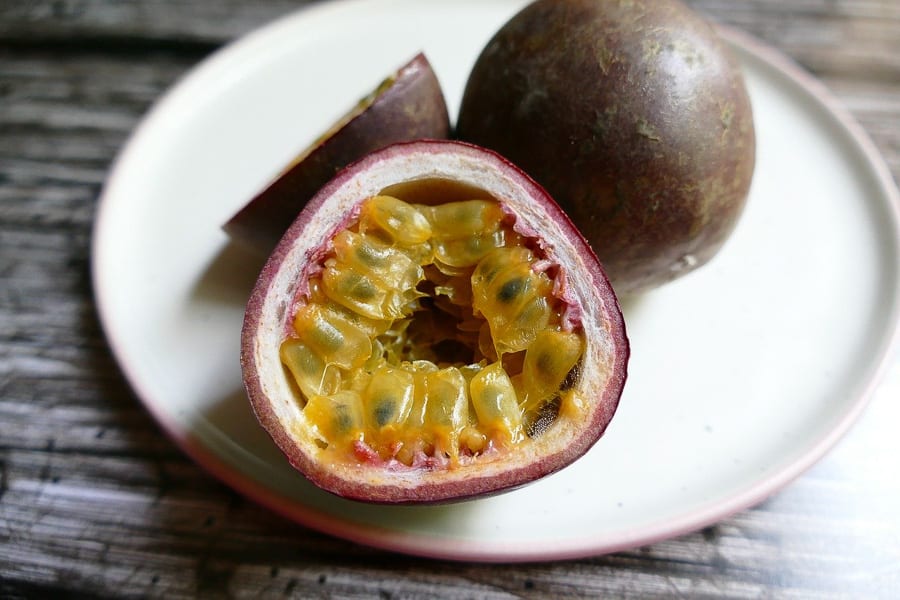
How to eat passion fruit
Passion fruit can be eaten raw; the best way is to cut the fruit in half and scoop out the flesh with a spoon.
The flesh is also used in desserts, such as pies and cheesecakes. Passion fruit juice is also popular in cocktails.
Milk Fruit or Star Apple
The fruit has numerous names, including cainito, caimito, star apple, star apple, purple star apple, golden leaf tree and abiaba.
The leaves are evergreen and alternate; they are simple oval in shape and entire.
The tiny flowers are purplish white and have a sweet flavor.
The fruit is globose in shape and typically measures from 2 to 3 inches in diameter; it is available in purple, green or red-skinned varieties.
When ripe, the pulp displays a radiating star pattern.
The milk fruit is a small, round to oval-shaped fruit with thin green skin. The flesh of the fruit is white or pale pink and contains black seeds. The taste of the fruit has been described as similar to that of grapefruit, lychee, and honey.
The milk fruit is native to Southeast Asia and is often used in Vietnamese cuisine.
The fruit can be eaten fresh or used in desserts and drinks.
How to eat milk fruit ?
The skin is rich in latex which makes it both non-edible and difficult to peel. Both the rind and the seeds of the fruit are not edible.
To eat milk fruit, first, you need to wash the fruit to remove any pesticides or dirt. Cut the fruit in half and scoop out the flesh with a spoon. The flesh can be eaten raw or used in desserts and
Durian Fruit
Durian is a fruit that is native to Southeast Asia. The fruit is notorious for its strong smell, which has been described as “stinky fruit.” The taste of the fruit has been described as sweet and creamy with a hint of onion.
The Durian is a large fruit that typically measures from 6 to 12 inches in diameter. The skin of the fruit is thick and spiky. The flesh of the fruit is yellow or white and contains large seeds.
Durian is often used in Southeast Asian cuisine. The fruit can be eaten fresh, cooked, or used in desserts.
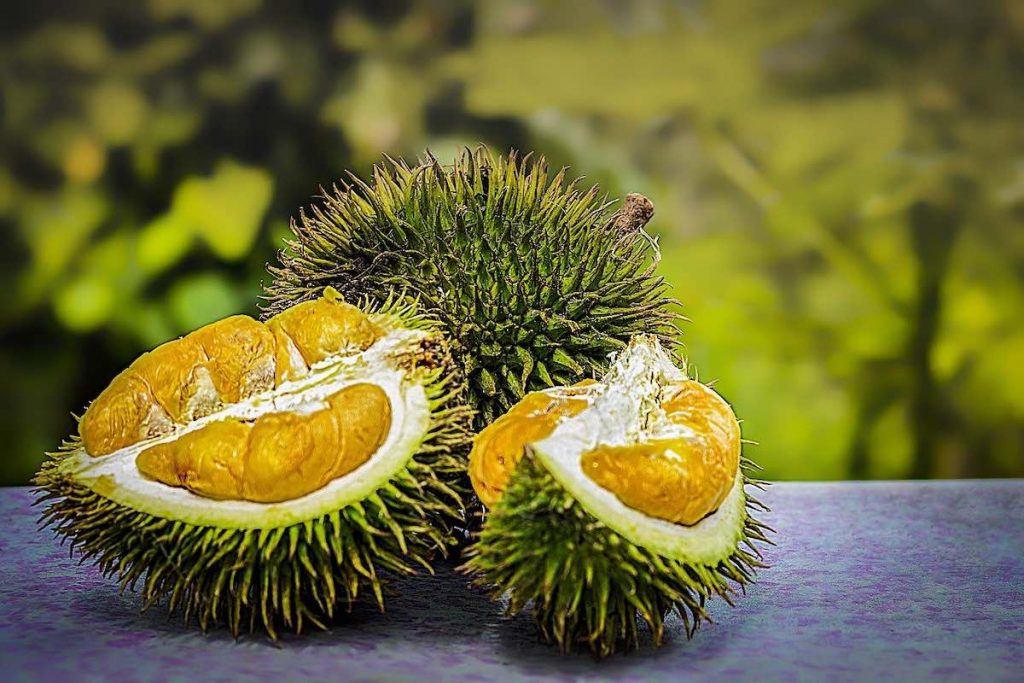
How to eat Durian
To eat durian yellow flesh fruit, first, you need to remove the thick skin and discard it. The flesh of the fruit can be eaten raw or cooked. Durian is often used in Southeast Asian cuisine. The fruit can be eaten fresh, cooked, or used in desserts.
Durian fruit is probably the most disgusting fruit in Vietnam.
Guava Fruits
Guava is a tropical fruit that is cultivated in many regions.
The fruit has a pronounced fragrance similar to lemon but less sharp.
The skin can be any thickness and is usually light green before maturity, but maybe yellow, maroon, or green when ripe.
The pulp inside can be white or pink flash may be sweet or sour and be off-white (“white” guavas) to deep pink (“red” guavas).
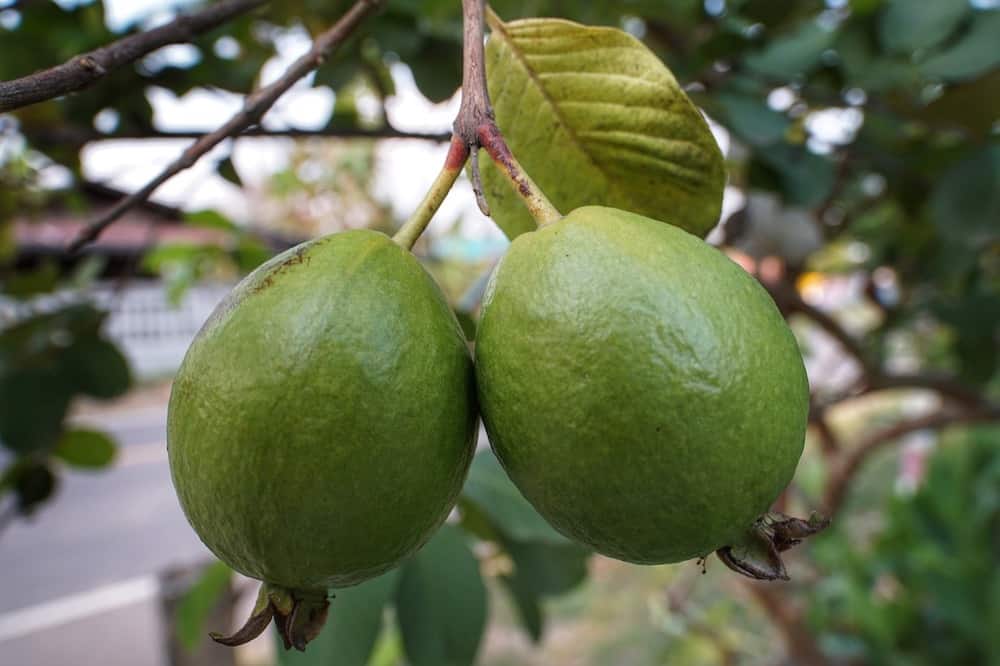
How to eat guava
The whole guava fruit can be eaten, including rind and seeds. The easiest way to eat it is to peel or not and cut it like an apple. Guava is a tropical fruit that is cultivated in many regions. The skin can be any thickness and is usually green.
Pomelo Fruits
Pomelo is a citrus fruit that is native to Southeast Asia. The fruit is the largest of all the citrus fruits, typically measuring from 10 to 12 inches in diameter. The skin of the fruit is thick and green or yellow in color. The flesh of the fruit is pink or white and contains large seeds.
Pomelo is often used in Vietnamese savoury salads.
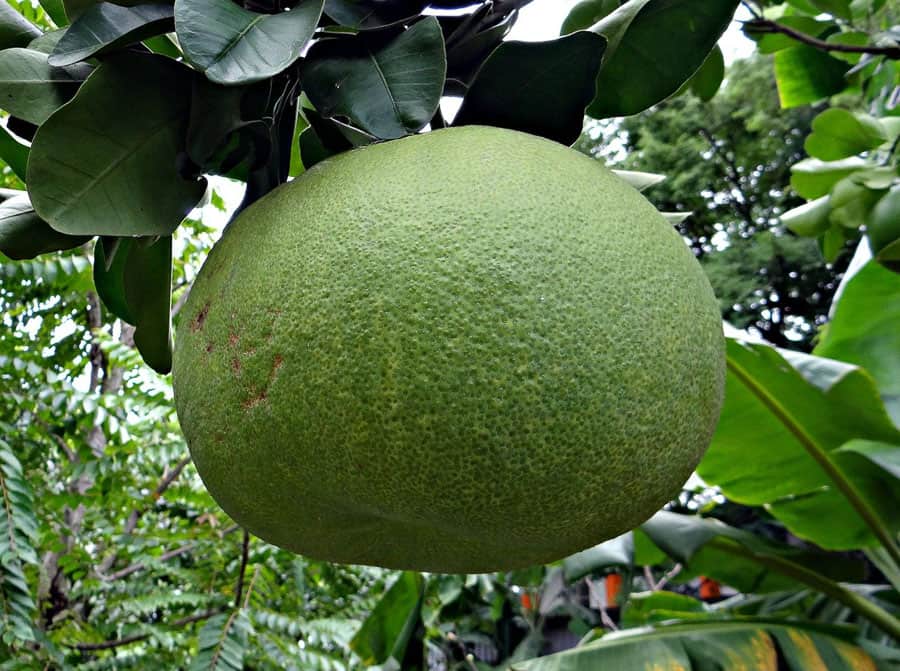
How to eat pomelo
To eat pomelo, first, you need to remove the thick bitter-tasting pith obstructing white or pink flesh.
Longan Fruit
Longan is a sweet fruit that is native to Southeast Asia. The fruit is small and round and has thin green skin. The flesh of the fruit is white and contains black seeds. The taste of the fruit has been described as sweet and slightly floral.
The longan is used in Vietnamese cuisine in soups. You should try longan sweet soup. desserts
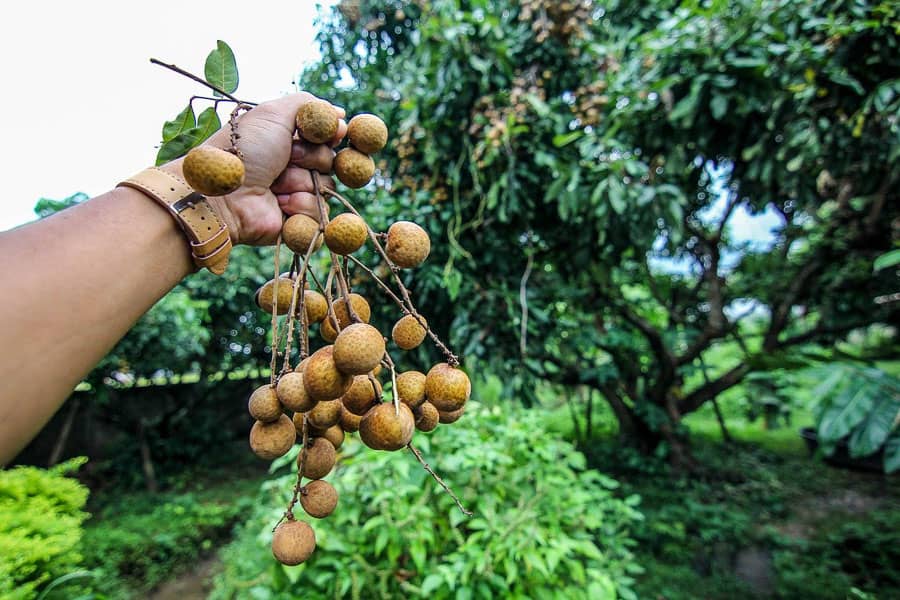
How to eat longan ?
Longan is easy to eat, just pinch the thin skin with your finger and pop the fruit into your mouth.
Jack Fruits
Jack fruit is the largest in the world tree-borne fruit, typically weighing from 10 to 50 pounds. The skin of the fruit is green or yellow and covered with sharp spines. The flesh of the fruit is white or yellow and contains large seeds.
Jackfruit is a very popular fruit in Vietnam cuisine. The fruit can be eaten fresh, cooked, or used in desserts. you can buy it as well dehydrated jack fruit.
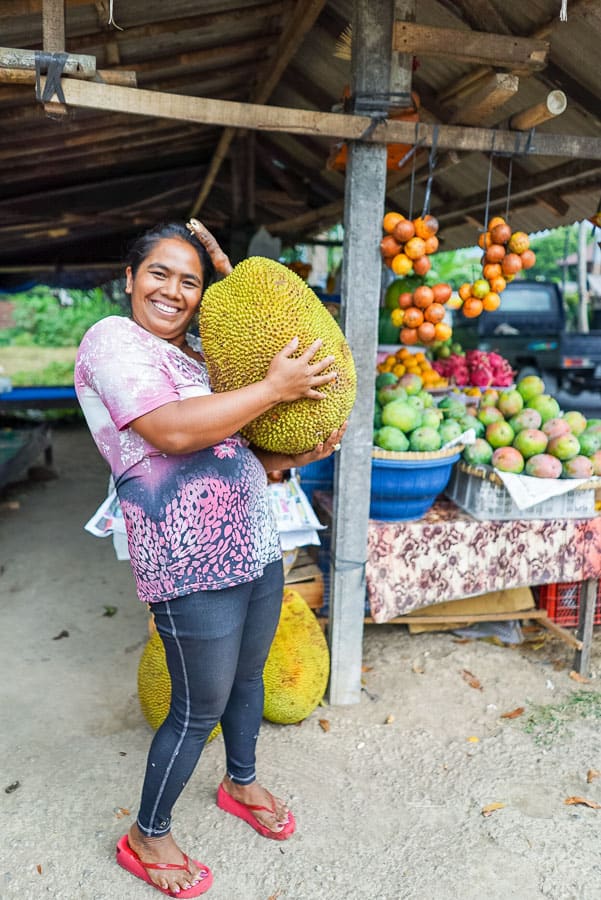
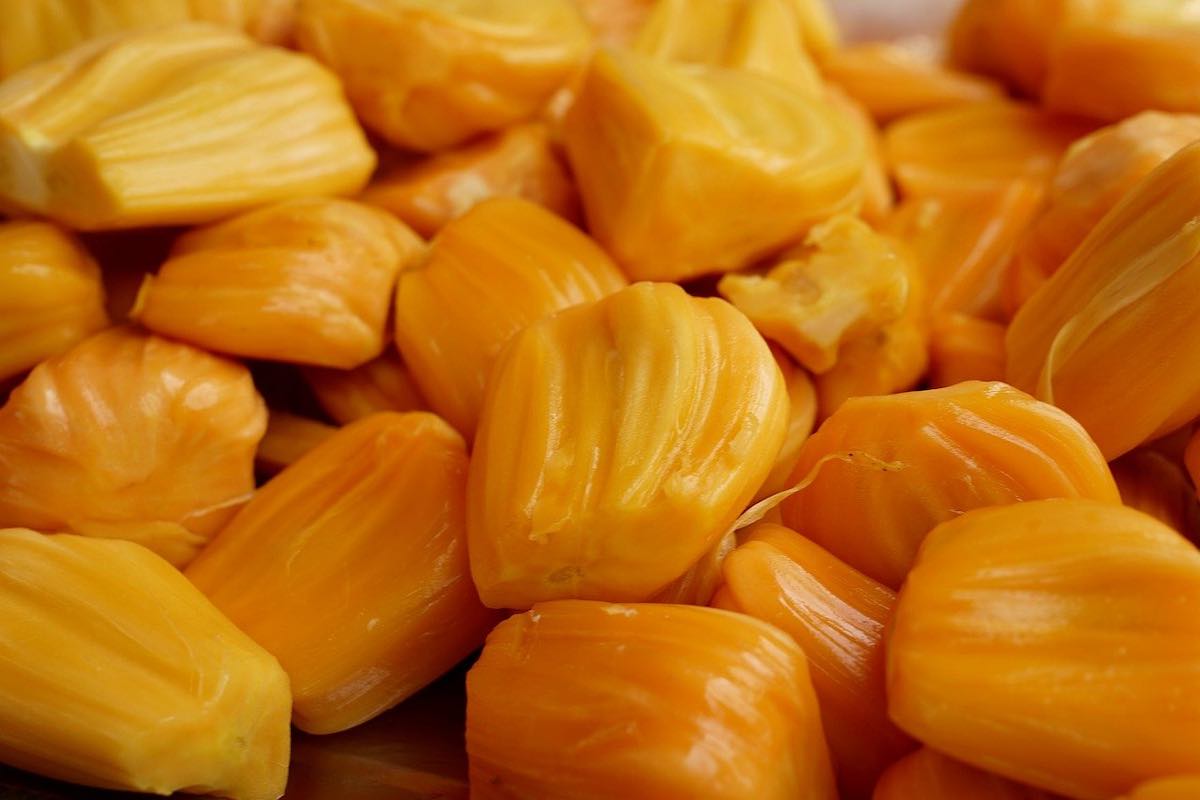
How to eat Jack fruit
To eat jackfruit, first, you need to remove the thick skin and discard it. Jack fruit is very big and hard to peel, so most of the time is sold by local vendors already peeled. If you want to see the whole fruit, you can see them on the local markets.
The soft flesh of the fruit can be eaten fresh or cooked. Jackfruit is often used in Southeast Asian cuisine. Jack fruit is delicious fruit but quite hard to digest, so when you try it for the first time, don’t eat it too much in one go.
Lychee Fruits
Lychee is a sweet tropical fruits that is native to Southeast Asia. The fruit is small and round and has thin green skin. The flesh of the fruit is white and contains black seeds. The taste of the fruit has been described as sweet and slightly floral.
Lychee is used in Vietnamese cuisine in savoury salads.
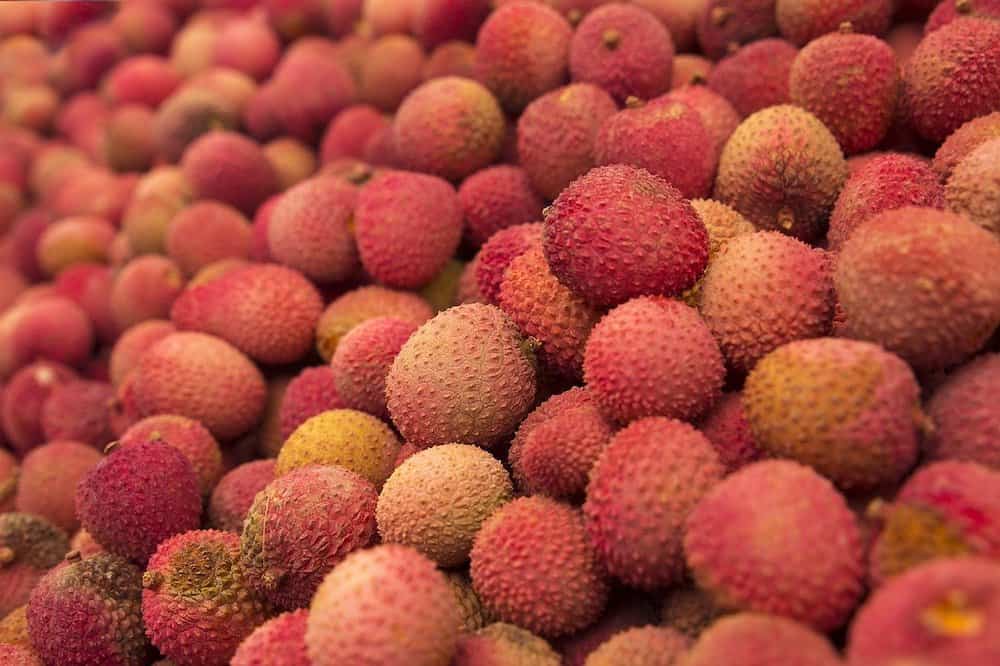
How to eat lychee
To eat lychee, first, you need to remove the thin skin and discard it. The flesh of the fruit can be eaten fresh or cooked.
Rose Apples
Rose apple is a small tropical fruit that is native to Southeast Asia. The fruit has reddish-purple skin and sweet, tangy flesh.
The Rose apple is used in Vietnamese cuisine in savoury salads.
How to eat Rose apple
To eat the rose apple, first, you need to remove the thin skin and discard it. The flesh of the fruit can be eaten raw or cooked.
Tropical Fruits of Vietnam
It’s very easy to buy fruit in Vietnam, there are plenty of street vendors, plus fruits can be found in most fruit shops or local markets. You can buy guava, pomelo, longan, jackfruit, lychee, and rose apple at most Asian markets.
Fruit lovers, will find Vietnam to be paradise.
Best fruits from Vietnam – Pin it
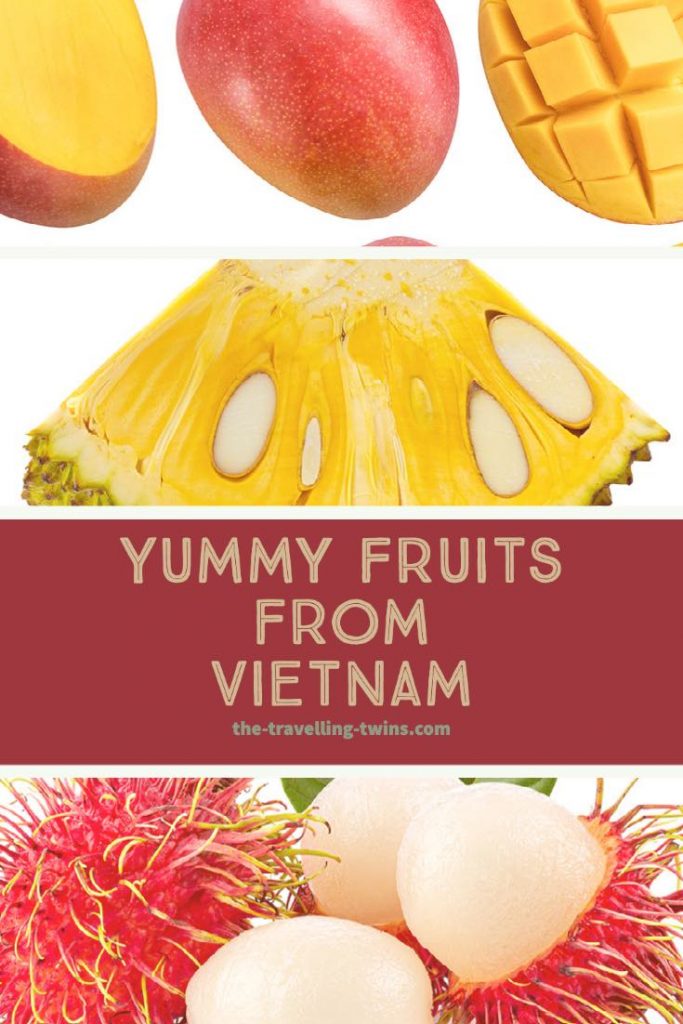
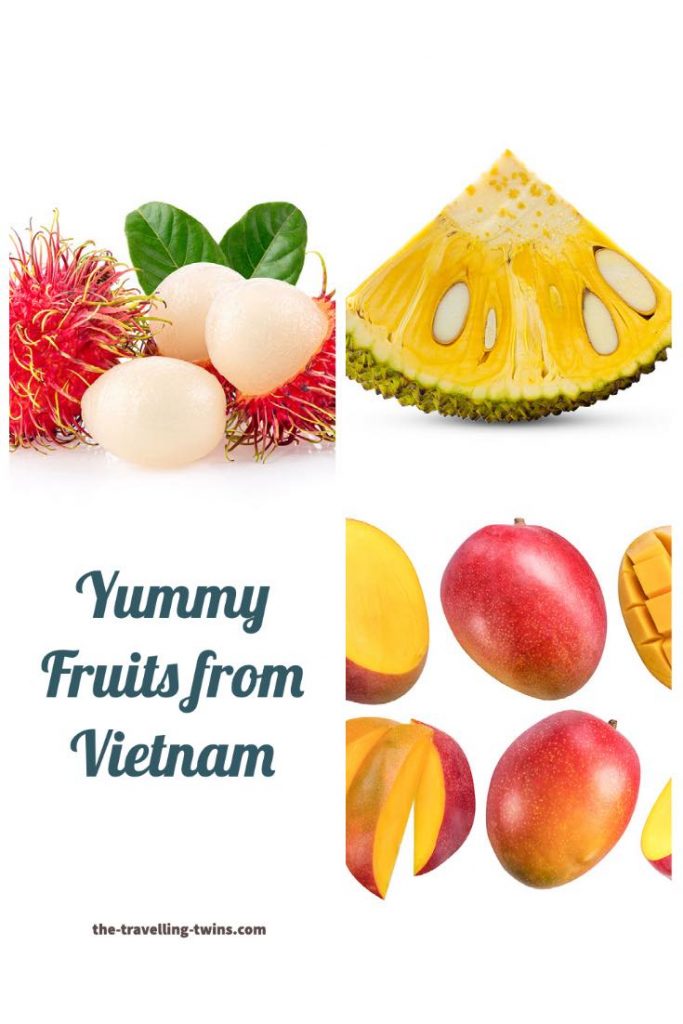
Privacy Policy Disclaimer
This website uses affiliate links for income and support.
If you like our website, please consider using these links. You will be directed to the vendor, and we will get a small commission on your purchase price at no increased cost to you.
We have researched facts stated here as far as practicable but please check anything critical before committing your time and money. We do not claim any special knowledge or expertise, and we are not consultants for our readers.